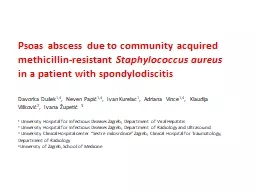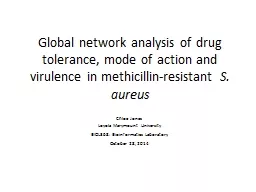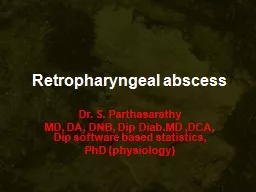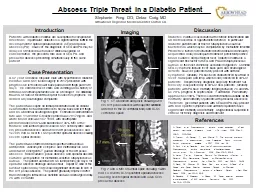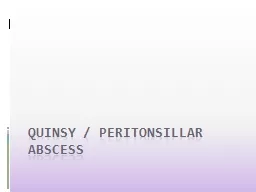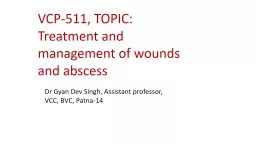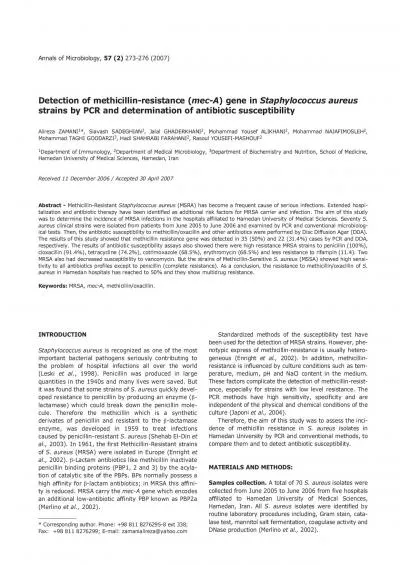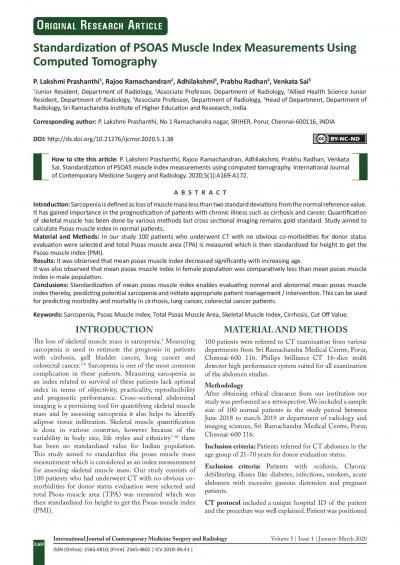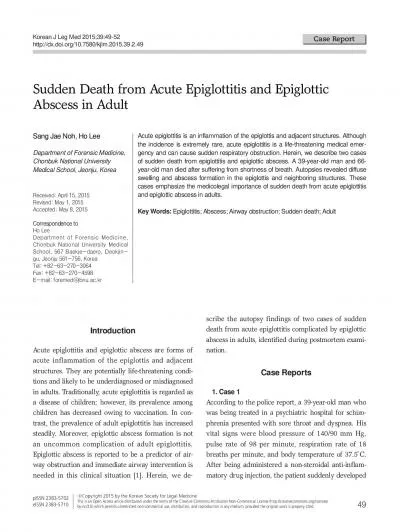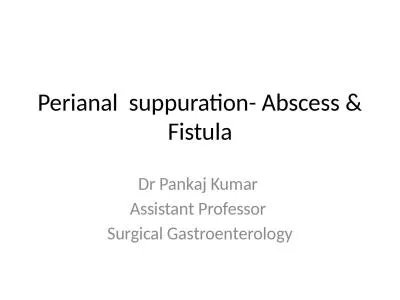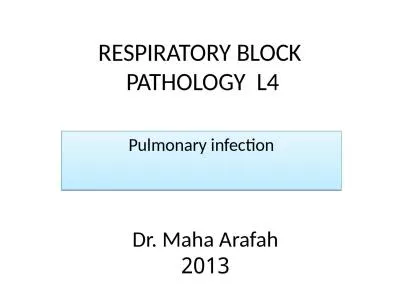PPT-Psoas abscess due to community acquired methicillin-resistant
Author : sterialo | Published Date : 2020-06-15
Staphylococcus aureus in a patient with spondylodiscitis Davorka Dušek 14 Neven Papić 14 Ivan Kurelac 1 Adriana Vince 14 Klaudija Višković 2 Ivana Župetić
Presentation Embed Code
Download Presentation
Download Presentation The PPT/PDF document "Psoas abscess due to community acquired ..." is the property of its rightful owner. Permission is granted to download and print the materials on this website for personal, non-commercial use only, and to display it on your personal computer provided you do not modify the materials and that you retain all copyright notices contained in the materials. By downloading content from our website, you accept the terms of this agreement.
Psoas abscess due to community acquired methicillin-resistant : Transcript
Download Rules Of Document
"Psoas abscess due to community acquired methicillin-resistant "The content belongs to its owner. You may download and print it for personal use, without modification, and keep all copyright notices. By downloading, you agree to these terms.
Related Documents

